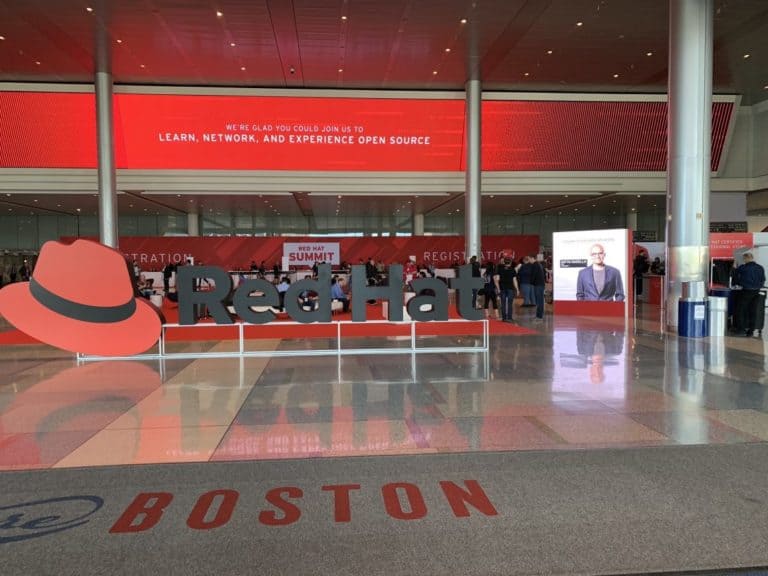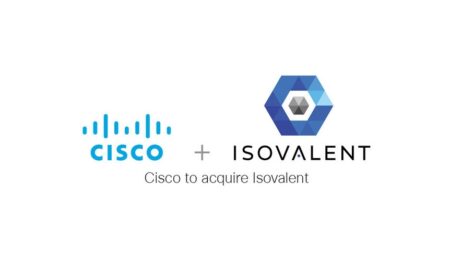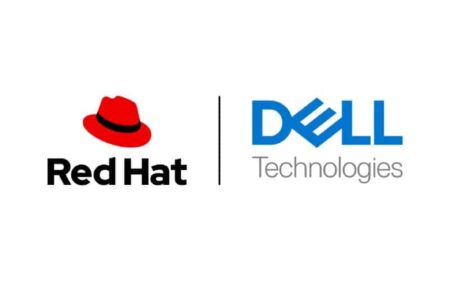Red Hat increasingly sees itself as the engine for the hybrid cloud. This was recently demonstrated during our visit to the annual Red Hat Summit 2019. The various products of the open-source specialist have become more or less a standard in the enterprise market. Discussions with employees and customers have also shown that the open-source specialist is paying more and more attention to the mid-market segment. All in all, an interesting development.
During the annual Red Hat community conference in Boston, no one could ignore it. The 26-year-old company has become almost indispensable when it comes to the use of open-source in large business IT environments. Especially now that open ecosystems are becoming more and more fashionable.
From huge multinationals to almost all IT infrastructure providers, somewhere in their solutions and applications, they do have a partnership with the open-source giant. For example, this could mean a connection with Kubernetes, Google’s open-source container platform. Containers have become the standard when it comes to delivering various workloads to wherever end users want them. This can be on the edge of their network, in the data center (on-premise or not), in hybrid cloud environments or in the well-known large public cloud environments.
Acquisition by IBM
At the conference, there were mostly announcements of solutions and applications for containers, and in particular hybrid cloud environments. Nevertheless, the open-source specialists, although they did not really want to do so, could not ignore that other issue: the proposed takeover by tech giant IBM.
In principle, Red Hat CEO Jim Whitehurst had little to say about it. Permission still had to be obtained from the various authorities. However, it turned out that progress had already been made in that area during the summit. He didn’t want to say any more than the fact that the acquisition is very advantageous for Red Hat because it can achieve growth better in this way.
Still, CEO Ginni Rometty of Big Blue was present to reassure the massive community that nothing will change after the takeover. For IBM, open-source has become more and more self-evident. According to Rometty, it helps companies and organizations – and, of course, especially the enterprise market – to innovate more. The decision to acquire Red Hat was therefore not a difficult one. According to her, the open-source giant is a company with a great culture and community.
Reassuring words
To reassure all Red Hat fans, IBM’s CEO added that the open-source specialist remains independent. Red Hat is and remains an open ecosystem. The management team will also remain in place.
What Rometty actually indicates is that there won’t be any extreme changes at the open-source specialist, but at Big Blue itself. IBM itself must adopt the open-source working style of Red Hat to develop their stack for the hybrid cloud and therefore be able to innovate more. This will greatly benefit the customers of both parties, so that they, too, can innovate. For her, open source is a real enabler that will ensure that more innovation takes place, also in other technological areas like artificial intelligence, blockchain and quantum computing in which Big Blue is now very active.
Version 8 of Red Hat Linux Enterprise
It has been mentioned several times: Red Hat is strongly committed to the hybrid cloud. This became evident from the various products that were presented in Boston. The latest release, version 8, of the flagship Red Hat Enterprise Linux (RHEL) is an example of this. By now, this business operating system (OS) has been rolled out for more than 50,000 customers. This allows users in the large business market to use developer tools and frameworks much more easily and to acquire better security for this purpose.
In addition, this version of the open-source business OS is now equipped out-of-the-box with the Insights diagnostic tool for detecting vulnerabilities and performance problems. Insights can also predict these problems through an extensive knowledge base of incidents and with the help of artificial intelligence. This also makes it possible to tackle potential stability problems.
The Application Streams tool has also been added, which creates the opportunity to create more flexible applications directly from RHEL. This tool makes it easier to use new programming languages or databases, without having to wait for an update of the OS. Also, older application versions can be saved for specific purposes.
OpenShift also gets an update
The launch of version 4 of container platform Red Hat OpenShift, which was created for the hybrid cloud, also underlines the importance that the specialist attaches to this. The latest version of this platform focuses even more on automating and managing the life cycle of containers.
The importance of OpenShift was further underlined by the arrival of Microsoft-CEO Satya Nadella for the announcement of a collaboration between both parties around the container platform. End users can now also access OpenShift through Azure. Both parties are also working on a tool, KEDA, for event-driven autoscaling based on Kubernetes. This should ultimately make event-oriented computer use possible.
Developments around midmarket
Therefore, the hybrid cloud was in the spotlight. RHEL and OpenShift have to become standard platforms. Of course, mainly enterprise customers who can and should benefit from this.
However, the question arises as to what will happen with the midmarket, or at least those companies that are just shy from being called ‘large enterprises’. This segment of companies is very broad and can, therefore, be an attractive market for the open-source specialist, with their various solutions and applications. This is especially true because these companies will sooner or later have to adapt their IT environments in order to be able to continue to innovate.
More attention for midmarket desired
In summary, we can conclude that the open-source specialist, with its large-scale offerings, does indeed open up all possibilities for the hybrid cloud. The roadmap of products like RHEL and OpenShift and the announced closer cooperation with Microsoft for Azure bear witness to this. The fact that the main focus is still on the enterprise market is understandable. After all, that segment has progressed furthest with the adoption and also offers the necessary scale.
Nevertheless, it remains interesting how Red Hat, if we believe various Red Hat employees, will pay more attention to the midmarket in the coming years. It is a fact that there is enormous potential in this market segment. Middleware seems to be an excellent enabler for this, but the spread of open-source philosophy also offers opportunities. However, Red Hat might have to communicate this even more clearly to their customers and especially their partners. Then, we could see more of what the company is doing for this part of the market. We remain very curious as to how this will crystallize in the near future.



















